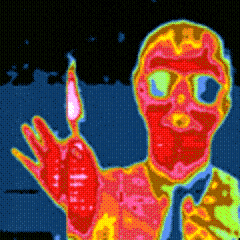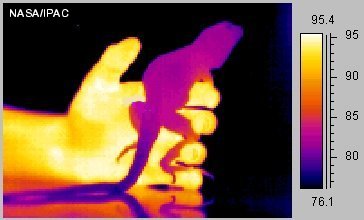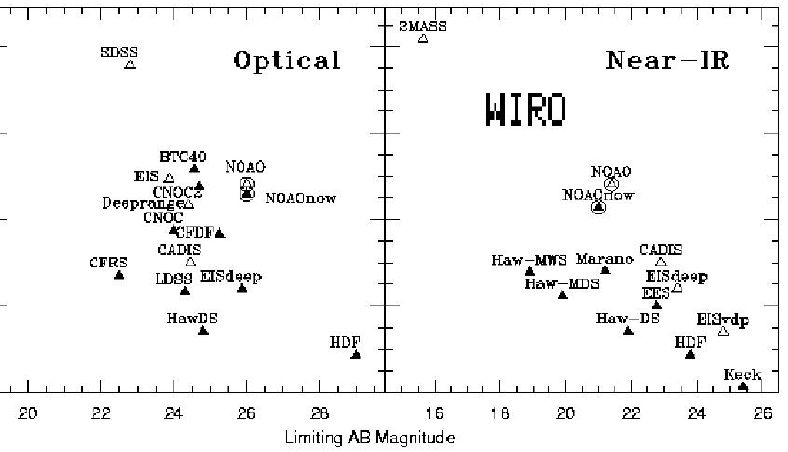Infrared Astronomy
Astronomical object emit light over a broad range of wavelengths, not just those visible to the human eye. Infrared light constitutes light that is redder than the reddest visible light. Light with wavelengths between 0.9 and 2.5 um is generally considered as the near infrared. Light at these wavelengths is primarily produced by objects that are familiar to visible light astronomers: stars, gas, etc. At longer wavelengths (mid- to far-infrared), light is produced by much cooler objects, i.e., dust grains, cool gas, etc. The fact that cooler objects emit strongly at infrared wavelengths means that infrared astronomy is very different from optical astronomy. In particular, the night sky, the telescope, and the instrument itself emit light in the infrared. This means that infrared instruments must be cooled to low temperatures and be carefully designed to avoid the stray light from the telescope and it's surrounding structure. The figures below show some familiar objects at infared wavelengths. Note how the infrared light traces heat.


Infrared Imaging Surveys
Astronomers analyze the light from faint astronomical sources. This means that telescopes are built with ever increasing size in order to allow astronomers to probe deeper into the mysteries of the universe. However, because of design limitations, the largest telescopes can only image a small region of the sky at a given time. The largest infrared telescopes are optimized for high resolution imaging over small fields of view. As a result, more moderate sized telescopes, such as WIRO, can still serve a crucial support role via wide field imaging. For example, a wide field imaging survey can identify the interesting, but rare, astronomical objects that can be studied in more detail with the larger telescopes. One measure of the efficiency of imaging surveys is given by the product of the collecting area of the telescope, i.e., the aperture squared, and the area of the sky imaged onto the detector, i.e., the field of view squared. Since the aperture size of a given telescope is fixed the only option available for optimizing the survey efficiency of a given telescope is to minimize the telescope focal length in order to maximize the field of view. This need drives the optical design of a survey instrument. Once this is established and the instrument is built the survey can begin. Now the depth of the survey is primarily determined by the exposure time spent on each field. Thus the survey can be designed as either a relatively narrow field but "deep" survey or a wider field, "shallow" survey. The figure below shows the depth vs. field for several near infrared surveys and illustrates how a WIRO survey might complement these.

As astronomers strive to build ever-larger telescopes, the future research productivity of WIRO will likely involve a wide-field imaging capability. Recently, UW astronomers have successfully proposed to the National Science Foundation's Major Research Instrumentation program to construct just such an instrument for WIRO. The WWF-Cam promises to provide UW faculty and students with one of the largest field of view of any infrared camera to date and will thereby enable a number of survey orientated research projects.
WWF-Cam Design (internal use only)
Related Links:
Infrared Classroom
Wyoming Infrared Observatory (WIRO)
University of Wyoming Dept. of Physics & Astronomy